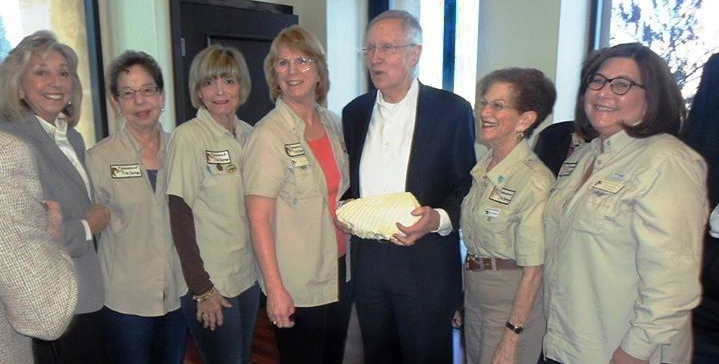Scientists Continue to Debate this Question at Tule Springs
- In 1901, the U.S. Geologic Survey reported the first findings of vertebrate fossils in the area.
- In 1933, paleontologists, including Fenley Hunter, working for the American Museum of Natural History unearthed the bones of two ground sloths, a Camelops (a large version of camel), and a partial skeleton of a mammoth – and remain a part of the museum’s fossil collection.
- In 1954 and 1955, the University of Chicago Institute of Nuclear Studies conducted the first scientific applications of Dr. Willard Libby’s new radiocarbon dating technique to document the area’s fossils.
- In 1955 and 1956, the Southwest Museum confirmed the importance of the site, and recommended interdisciplinary studies of the area’s geology, paleontology and archaeology resources.
- In 1962, the area was considered “The Big Dig.” A team of scientists, funded by the National Science Foundation and chronicled by National Geographic, camped at the site for four months and bulldozed two miles of deep trenches to study the area’s fossils. The trenches still can be seen from Google Earth.
- In 1979, 1000 acres was found eligible for the National Register of Historic Places, and listed as the “Tule Springs Archaeological Site.”
- In the 2000s, the Bureau of Land Management put this area in “disposal consideration,” with intent to transfer the area to developers. Environmental review and the persistence of local groups built momentum to preserve and protect the area as a unit of the National Park Service.
- The Tule springs Fossil Beds National Monument Act introduced in both houses of Congress in May 2013 is passed in December of 2014 and joins the National Park's family.
